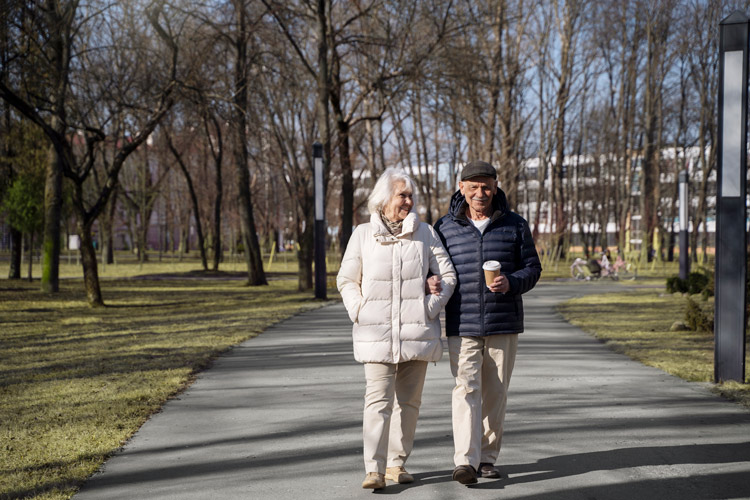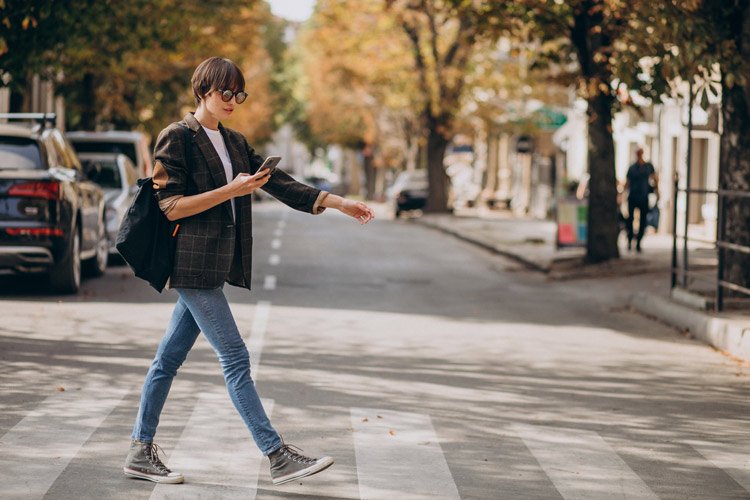Consider Walkability When Home Shopping in Erie, PA
The location of a home influences more than just property value. It can also impact the health, lifestyle, and social opportunities of those living there. Many of these benefits and drawbacks of a particular location emerge from its walkability (and bike-ability).
While there are many worthy reasons to live far away from the hustle and bustle of retail, commercial, and business areas (e.g., more space, proximity to nature, and less noise), people often forget the perks of living in a more urban area. For this reason, Maleno highlighted six core reasons why you should consider neighborhood walkability when home shopping. Additionally, we mention a few of the most walkable neighborhoods in Erie, Pennsylvania.

Defining Walkability
In the context of urban development, there are a myriad of definitions of walkability. Some require specific block lengths, sidewalk widths, speed limits, commercial-to-residential ratios, and a long list of other criteria. However, for the purposes of this article, we’re defining walkability as the ability to walk safely to community amenities within 30 minutes or less. Having the ability to do so allows people to:
- Access public transportation
- Find public attractions
- Receive medical attention
- Receive an education
- Shop for essential items
- Work without owning a vehicle
In a nutshell, walkable neighborhoods provide opportunities for people to walk from their homes to work, school, parks, civic facilities, bus stops, restaurants/bars, grocery stores, and many other destinations. Some hallmarks of walkable areas include linked sidewalks and bike lanes, adequate street lighting, landscaping, car-free alleyways and streets, and low-traffic two-way streets.

Best Walkable Neighborhoods in Erie, PA
For all of its beauty and charm, Erie County, PA, is definitely a car-oriented county. The Walk Score of many of our ZIP codes shows that most areas are “car-dependent,” meaning most errands require a car. That said, there are a variety of neighborhoods in Erie that are well-suited for people who love to walk and bike.
It’s important to note that sites such as WalkScore.com are helpful in determining walkability, but their lack of contextual knowledge of real estate values, new local establishments, safety, and other important factors can lead to some misleading results. Considering Maleno’s insights as a long-established real estate company in the Erie community combined with our walkability score research, we think some of the most walkable neighborhoods in Erie include:
- West Bayfront Erie: There are few neighborhoods in Erie with as much explosive growth and potential as the West Bayfront. With access to one of the best views in town, a walkway leading to the summer’s biggest events, a newly restored park, and affordable medical facilities, this neighborhood hits a homerun. If you’re looking for a solid investment and a walkable/bikeable neighborhood, then you need to consider the West Bayfront.
- Greater Kahkwa: Although it doesn’t top the technical “Walk Score” lists you can find online, Greater Kahkwa is an excellent neighborhood for people who love to walk and bike. Nestled between Frontier and Tracydale, you can access anything from a post office and dry cleaner to tax consultants and hairdressers. With a bike, you can easily access a wide range of restaurants, shops, gyms, and more.
- Frontier: Albeit its technical Walk Score indicates only “somewhat walkable/bikeable,” we’d argue that Frontier is one of the front-runners regarding safety and proximity to schools, restaurants, parks, and public transportation. Whether you’re looking for some grub or a cocktail, need to see an optometrist or an ENT specialist, have dry cleaning to drop off, or want to take a walk in a nature-filled park, it’s all within walking distance.
- Bayfront: The Bayfront in Erie is hitting a renaissance along with the West Bayfront. Enjoy strolling through Frontier Park or head down to the Bayfront Promenade, pick up your medications at CVS, and walk your kids to school at Strong Vincent.
- Glenwood Heights: With beautiful tree-lined streets, Glenwood Heights is in close proximity to several parks, schools, medical facilities, and an array of community assets, such as the Erie Zoo and the Flo Fabrizio Ice Center.
- Southeast Erie: Southeast Erie is still somewhat of an undiscovered gem. Both on foot and by bike, you can reach a wide range of stores, restaurants, and services.

What Are the Benefits of Walkability?
There are two vital premises to walkability: One, having a destination. Two, enjoying the experience of getting there. A massive study from global sustainable development firm, ARUP, shows a multitude of benefits of walkable neighborhoods. Here are some of the most eye-opening reasons to keep walkability top of mind:
1. It Promotes a Healthy Lifestyle
Walkable neighborhoods inspire active lifestyles across all ages. And people who are physically active live longer. Unfortunately, inactivity is a growing and dangerous trend, dropping roughly 32% in the last four decades. The World Health Organization (WHO) identified that inactivity is the fourth leading risk factor for global mortality.
Conversely, promoting walking can literally save lives. People 60+ years old who do just 15 minutes of exercise a day reduce their risk of dying early by 22 percent.
The WHO identifies dietary choices and physical inactivity—caused by increasing urbanization, sedentary jobs, and passive modes of transport—as the major causes of obesity. However, the likelihood of individuals developing obesity decreases by 4.8 percent for every .62 miles walked per day.
What’s even more impressive is that regular walking decreases the risk of type 2 diabetes, coronary heart disease, stroke, and all-cause mortality by 20 percent! Lastly, those who walk for more than 8.6 min daily are 33 percent more likely to report better mental health.
2. It Improves Community Perception and Safety
Walkable neighborhoods bring people to the streets and increase activities in public spaces, dramatically improving the perception of safety and individual confidence. Researchers note that people who felt safe walking after dark were 70 percent more likely to walk at least five times per week.
A walkable neighborhood is also safer. Clean, well-lit communities with eyes on the street have less drug crime, burglary, and vandalism.
3. It Fosters Social Interaction
In a walkable neighborhood with light traffic, the use of public space raises the frequency of informal interactions and builds ties among neighbors. Fascinatingly, when researchers study residents living on a street with 2,000 vehicles per day versus 16,000 vehicles per day, those in the former group had three times as many friends.
With that increase in social interaction comes an increased level of trust in one’s community. Case in point: residents living in walkable neighborhoods exhibit at least 80% greater levels of social capital than those living in car-dependent ones, meaning they’re more likely to know and trust other neighbors and are more civically engaged.
4. It Boosts the Local Economy
Studies suggest that walkable neighborhoods are not just healthier but also wealthier. Researchers found positive correlations between improved walkability, raised local retail spend, enhanced value of local services and goods, and the creation of more job opportunities. One of the main reasons for this correlation is that people who walk to shops spend more than those who drive by about 65 percent!
5. It Makes You More Productive
Increased walking correlates with higher levels of productivity and creative thinking because exercise improves the ability to make decisions and organize thoughts. It’s the reason people usually perform better on tests after exercising. Conversely, physical inactivity can cost an individual up to one week of productivity per year.
Walking also boosts creativity. According to research, a person’s creative output increases by an average of 60 percent when walking. It’s one of the reasons companies and investors are interested in investing in walkable downtowns. They see a competitive advantage in locating in vibrant neighborhoods, in conjunction with reinforcing brand awareness and talent attraction.
6. It Increases Property Value
Properties in walkable neighborhoods are worth more than those that aren’t. In fact, “pedestrianization” of a street can lead to an increase in:
- $9 per square foot for annual office rent
- $7 per square foot for retail rents
- $82 per square foot for home values
- $300 per month for apartment rentals
…And So Much More
From reducing your carbon footprint and lowering air pollution to beautifying streets and creating a sense of place, we have just scratched the surface of the importance of walkability, and new research is constantly emerging. But what’s abundantly clear is how positive it can be for homebuyers to find a home in a walkable neighborhood.
If you’re interested in seeing what’s out there, let’s do a few walk-throughs together to find the perfect home for you. Reach out today to speak with an agent.





